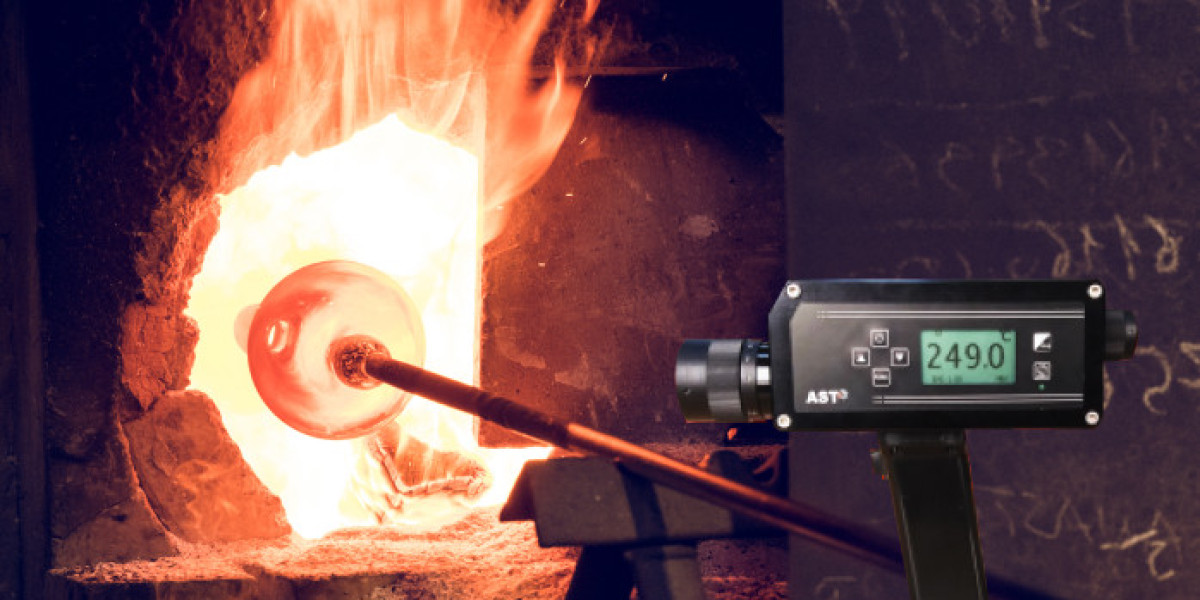Introduction
In industrial processes, temperature measurement is a critical factor that directly influences product quality, process efficiency, and safety. Pyrometers are invaluable tools designed to precisely measure high temperatures without contact, making them ideal for various industrial applications. However, selecting the right pyrometer for your industrial process is vital to ensure accurate and precise temperature readings. In this blog, we'll explore the factors to consider when choosing a pyrometer, emphasizing the importance of accuracy, wavelength range, and other key features that affect the selection process.
Types of Pyrometers
Before diving into the selection criteria, it's essential to understand the common types of pyrometers available in the market:
Infrared Pyrometers: These non-contact pyrometers measure temperature based on the infrared radiation emitted by the target surface.
Optical Pyrometers: Optical pyrometers, often used in metalworking, rely on comparing the brightness and color of the target's incandescent image with a known temperature source.
Contact Pyrometers: These require physical contact with the material and are typically used for lower-temperature measurements.
Factors to Consider
When choosing a pyrometer for your industrial process, several critical factors come into play:
Accuracy: The accuracy of a pyrometer is of paramount importance. Precision in temperature measurement can significantly impact the quality of the final product. Different pyrometers offer varying degrees of accuracy, and your choice should align with your specific application.
Wavelength Range: Each material emits and absorbs radiation at different wavelengths. It's essential to select a pyrometer with a wavelength range that matches the target material. Failure to do so can lead to inaccurate temperature readings.
Emissivity: Emissivity measures an object's ability to emit thermal radiation. It varies based on the material's surface properties. A good pyrometer should allow you to adjust for emissivity, ensuring accurate measurements on different materials.
Response Time: In some industrial processes, speed is critical. The response time of a pyrometer matters, as it determines how quickly it can provide a temperature reading. Some applications may require rapid measurement to maintain process control.
Environmental Conditions: Consider the environmental conditions in which the pyrometer will operate. Dust, humidity, and ambient temperature can affect its performance. Choose a pyrometer that can withstand the specific conditions of your industrial setting.
Industrial Applications
Let's look at a few examples of how these factors apply to different industrial applications:
Metal Processing: In industries like steel manufacturing, accuracy and a broad wavelength range are crucial due to the extreme temperatures involved. Pyrometers are used for temperature control during the steelmaking process, ensuring product quality.
Glass Manufacturing: Glass production relies on precise temperature control. Pyrometers with adjustable emissivity settings are ideal for accurately measuring glass temperature, which impacts product quality and energy efficiency.
Ceramics Production: The ceramics industry often requires quick temperature measurements. Pyrometers with fast response times are beneficial for monitoring and controlling the firing process.
Selection Process
Selecting the right pyrometer for your industrial process involves several steps:
Assess Your Requirements: Understand the specific temperature measurement needs of your process, including the temperature range and precision required.
Choose the Appropriate Type: Based on your requirements and the type of material being measured, select the most suitable type of pyrometer (infrared, optical, or contact).
Evaluate Key Features: Consider factors such as accuracy, wavelength range, emissivity settings, and response time to match your application's demands.
Budget and Maintenance: Take budget constraints into account, but remember that investing in a reliable pyrometer often pays off in terms of product quality and process efficiency. Also, plan for regular calibration and maintenance to ensure accuracy and longevity.
Calibration and Maintenance
Pyrometer calibration is crucial to maintain accuracy over time. The procedure for pyrometer calibration should be followed as per manufacturer guidelines. Regular calibration and maintenance help ensure that your pyrometer consistently delivers accurate temperature measurements. This procedure typically involves comparing the pyrometer's readings to a known reference source and making necessary adjustments.
Conclusion
Selecting the right pyrometer for your industrial process is a decision that should not be taken lightly. Consider factors like accuracy, wavelength range, emissivity, response time, and environmental conditions to make an informed choice. The correct pyrometer can lead to improved product quality, energy efficiency, and process control, ultimately contributing to the success of your industrial operations.








